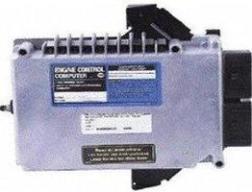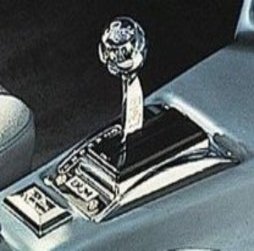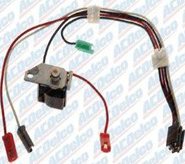Electronic Transmission Controls

The electronic transmission controls on modern vehicles are impressive. With the advancement of this automotive technology vehicle manufacturers are able to increase fuel economy.
They can even provide better performance with the addition of more gears at the same time. Just 20 years ago the 3 speed transmission was the standard. Now car makers are installing 7 and 8 speed automatic units.
Through the use of these electronics today’s transmissions have better shifting quality and shift timing. Although electronically controlled units function in the same basic way as the straight up hydraulic ones did back in the 60’s, the computer adds a new level of efficiency.
How Technology Changed Inside
In the old days hydraulic controlled transmissions used a device called the governor to control line pressure.
They used throttle position to make the decisions on when to shift up to the next gear. The TV or throttle valve cable was connected to the gas pedal. This controlled down shifting to a lower range know as the passing gear.
Most modern electronically controlled transmissions do not have governors anymore or even throttle pressure valve devices anymore. The decisions on what gear the transmission is to select is now performed by the transmission control module that activates shift solenoids on the valve body.
Keep in mind these solenoids do not directly control the transmission clutches and bands. These are still engaged and disengaged by hydraulic fluid pressure. The solenoids simply control the fluid flow and pressure as dictated by the transmission control module and vehicle conditions that it senses.
Transmission Control Modules

At the heart of any electronic drive train control would be the transmission control module.
The TCM relies on programming stored in its memory to provide gear shifting at the optimal time.These are sometimes updated by the factory as new firm ware.
The first input the controller looks at to determine what action to apply is the position of the shifter.
When the drive range is selected the control module will use its shift schedule to decide when to up shift automatically. The computer also looks at a few other things.
Things like engine temperature, and the load of the engine as determined by the map sensor, the speed of the vehicle determined by the vehicle speed sensor and also attention to the throttle position selected by the driver is obtained through the TPS sensor.
When these sensors fail they set trouble codes in the computer. These codes can indicate both engine and transmission issues. For this reason the transmission codes in the 700 range should be addressed after the lower number codes for engine sensors are diagnosed and repaired.
A few other switches and sensors are monitored by the transmission controller. An important one is the brake switch which is used to disengage the torque converter clutch when the brakes are applied.
Although the brakes do not have anything to do with the up-and-down shifting of the gears it can notify the transmission control module that downshifting for engine braking would be welcomed.
Smart Transmission Control Modules

One of the slicker electronic transmission controls is the ability of the TCM to learn the habits of the driver and provide a shift schedule that suits the driver’s needs.
The transmission control module does this by monitoring and remembering the typical driving style of a driver and the operating conditions of the vehicle at the time.
With this information the TCM can adjust the timing of the shifts and the operation of the torque converter clutch to provide good power and smooth shifting at the right times. When electronic systems are capable of learning and storing memory in this manner they can be considered adaptive or smart.
The transmission computer is also able to compensate for internal problems such as seal leakage and wear and tear on clutch discs and friction plates.
Its adaptive capabilities can only take you so far. Often when the transmission can no longer compensate for an internal problem it will set check engine light codes in the P0700 range. Share or bookmark this page about electronic transmission controls.
Example of Transmission Trouble Codes
The following is a list of some common generic transmission trouble codes. P0700 Automatic Transmission System Malfunction Detected, P0705 A/T Check Shifter Signal Circuit Malfunction, P0711 A/T Transmission Fluid Temperature Sensor Signal-No increase.
P0712 A/T Transmission Fluid Temperature Sensor Low Input, P0713 A/T Transmission Fluid Temperature Sensor High Input, P0720 Auto Trans Output Speed Sensor – Low Output Above 15 MPH. These kinds of set codes can help technicians pinpoint and diagnose specific internal transmission problems. One thing for sure is that as automotive technology advances the transmission becomes smarter just like the rest of the vehicle. For more information on the theory of operation as well as some specific problems visit my page about automatic transmissions.
If you’re interested in finding out more about this website and what kind of information is available here this next link will take you to the homepage from this page about electronic transmission controls.

